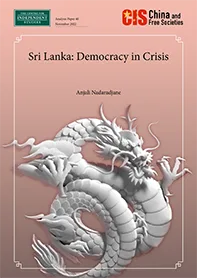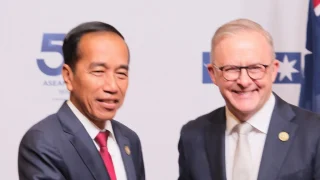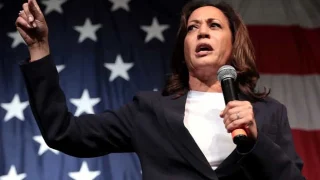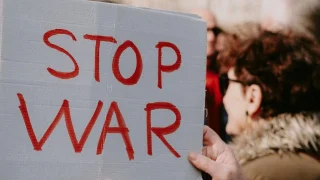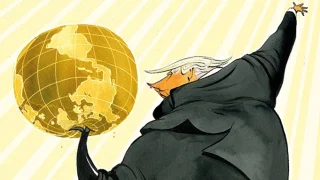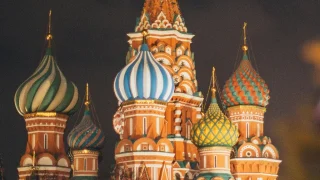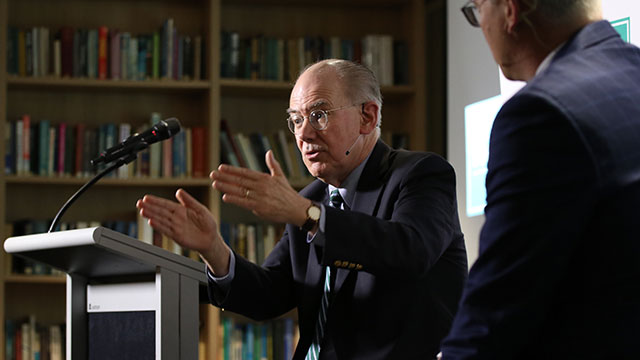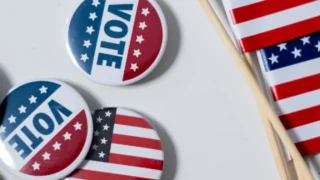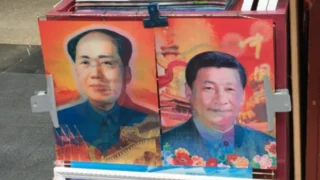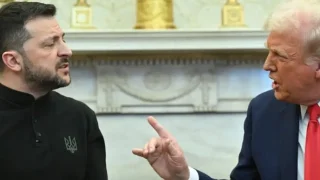
Introduction – Sri Lanka: Democracy in Crisis
Today, Sri Lanka is mired in a crisis on multiple fronts. The country faces economic collapse and political instability. Its acute food, fuel, and medical shortages have pushed the country onto the brink of a humanitarian disaster.
A legacy of government corruption, nepotism, short-termism, poor economic management, and a crippling civil war have undermined the democratic norms and institutions of Sri Lanka. The Rajapaksa government, which dominated Sri Lanka’s political scene over the last 20 years, adopted several poor policy decisions, amassing vast debt in the process and sparking widespread social unrest across the country as disenfranchised voters sought to oust the government.
This paper examines the factors that weakened the democratic elements of Sri Lanka’s political system. It analyses the recent passing of the 22nd Constitutional Amendment in Sri Lanka’s parliament and its implications for reforming the island nation’s polarising Executive Presidency.
The first section of the paper provides an introduction into Sri Lanka’s system of government. It outlines the events which caused Sri Lanka’s economic and political collapse earlier this year, particularly during the Rajapaksa government’s rule.
The second section will analyse the recent passing of the 22nd Amendment to Sri Lanka’s Constitution in October 2022, which followed a period of much debate and dissension in parliament. The section considers whether the amendments are sufficient to revive the integrity of Sri Lanka’s democratic systems.
The third section will consider how fractures in Sri Lanka’s constitutional democracy made the country vulnerable to foreign influences. The section also explores the rising tide of authoritarianism in Asia, comparing Sri Lanka’s governance with other countries in the region. It also examines how extensive lending, infrastructure projects and aid, allowed China to influence Sri Lanka’s bureaucracy and media and capture political elites.
The final section of the paper will address potential policy solutions to the issue. Australia’s interests in upholding the rule of law and maintaining security, stability, and prosperity in the Indo-Pacific, mean Sri Lanka should be a focal point of Australia’s interests in the region. As Sri Lanka’s humanitarian crisis deepens, hundreds of Sri Lankans have boarded boats to Australia, many on fishing trawlers with no drinking water and limited food rations. Australia has an opportunity to shift its tone by deepening its relationship with Sri Lanka through economic engagement, trade, business, and maritime security. Further collaborating with India and other members of the Quadrilateral Security Dialogue to constructively support Sri Lanka would also foster dialogue and cooperation within the region. It could also look to endorse anti-corruption efforts and Sri Lankan civil society organisations to push for greater transparency, accountability, and integrity in Sri Lanka’s political processes.
Sri Lanka’s political system
For much of its history, Sri Lanka’s governance system has vacillated between autocracy and democracy. Following its independence from British administration in 1948, Sri Lanka operated as a constitutional democracy. It held regular elections and power oscillated between two political parties.
In 1972, the Constitution of the Republic of Sri Lanka was enacted. This shifted the bicameral legislature into a unicameral body and the governor-general was replaced with a president as a head of state. Executive power remained with the prime minister and cabinet. The change lacked multi-partisan support and encouraged a more authoritarian form of politics. Political elites exploited the process of constitution-making to consolidate their hold on political power. This trend can be observed in the 1972, 1978, 2010 and 2020 elections where political alliances won elections by manipulating constitution-making to pursue their political interests and retain power.1
In 1978, the constitution was rewritten which included renaming the island nation, the Democratic Socialist Republic of Sri Lanka and bestowing new executive power on the president. The ambiguous drafting of the 1978 Constitution meant that on the surface, the document was conveyed as liberal democratic in nature. Various devices were implemented that materially undermined the basic norms and standards of the constitution.2 The constitution recognised the separation of powers, while raising the executive president above the parliament, the cabinet, and the judiciary.
A political transition in 2015 resulted in a moderately more democratic constitution and a better balancing between the legislature and the executive. The introduction of the 19th Amendment aimed to minimise the powers of the executive presidency and encouraged a more proportional form of power sharing between the executive and legislature. However, any hard-won gains have been reversed in the last few years. The 20th Amendment thrust Sri Lanka back into a system of hyper-presidentialism with power concentrated in the Executive President.3
The Executive Presidency continues to be one of the most contentious issues in Sri’s Lanka’s constitutional and political history. It was implemented with the intent of establishing a more stable, centralised, and authoritarian political structure. The belief was that it would propel Sri Lanka into a new era of market reforms, economic dynamism, and global re-integration. Prior to that, a Westminster-style prime ministerial system had defined Sri Lanka’s system of government and had fostered unsustainable levels of welfare spending, precipitated bloated state regulations on economic activity and caused economic stagnation.4
The executive presidency model starkly contrasts with Australia’s constitutional parliamentary democracy where the prime minister is subjected to the scrutiny of the representatives in parliament. They remain prime minister so long as they can command the confidence of parliament and their party room. On the other hand, Sri Lanka’s executive presidency can only be deposed through resignation, impeachment, or military coup. As a result, a vast amount of power is vested in a single individual, supplanting the balance of power.5
Following a return to hyper presidentialism in October 2020, the President recovered a vast range of powers. He or she could dismiss the Prime Minister at will, hold any cabinet portfolio and allocate ministerial portfolios among various members of the Cabinet without consulting the Prime Minister. The President had the power to appoint justices of the Supreme Court, the chief justice, ambassadors, and public officials. The incumbent could also dissolve a democratically elected legislature after only two-and-a-half years (half its term) without providing any reasons for doing so. Furthermore, the president could wield their power to declare a State of Emergency at any time that he or she wished, could grant pardons to convicts and had immunity from both civil and criminal proceedings.6
The Executive Presidency has attracted calls for reform as well as abolishment. Unfortunately, the allure of power has meant that constitutional amendments thus far have not constrained the president’s powers sufficiently. Any meaningful constitutional reform requires a two-third majority in the national legislature.
The Rajapaksa government
Much of Sri Lanka’s current turmoil points to mismanagement within the Rajapaksa government. The Rajapaksa family are a ruling dynasty which dominated Sri Lankan politics for over twenty years. Under their control, critics described Sri Lanka as a “soft dictatorship”.7 The Rajapaksa government rose to power when the country was embroiled in financial turmoil. In 2005, Mahinda Rajapaksa won presidency on an anti-separatist and Sinhalese nationalist platform.8 Their presidencies were characterised by authoritarianism, democratic backsliding and ethno-majoritarianism. Mahinda’s brothers Chamal, Gotabaya and Basil Rajapaksa all presided over ministries which controlled three-quarters of the national budget. They built popular support on the platform that they would end the Sri Lankan civil war.9
The Sri Lankan civil war was a decades long bloody conflict between Sinhalas and the minority Tamil population. The Tamils had faced systemic discrimination from the majority Sinhalese Buddhist population, the main support base of the Rajapaksas. The Tamils hoped to create an independent state called Tamil Eelam in the north-east of the country. The conflict continued from 1983 until 2009.10 In that period, India played a role in attempting to establish peace talks and engaging in peacekeeping operations on the ground, particularly because the ongoing conflict posed threats to India’s integrity. Following the war, India offered unprecedented financial assistance to Sri Lanka in the hope of supporting their island neighbour towards a sustainable, stable, democratic, and equitable post-war settlement.11
The Rajapaksa government purported to pursue a policy of ‘zero civilian casualties’ and described its operations as a humanitarian ‘hostage rescue’ mission. However, Gotabaya Rajapaksa, the secretary to the Ministry of Defence at the time, ordered the final military offensive against the Tamil Tiger Rebels (the Tamil opposition movement) which killed as many as 40, 000 civilians and sparked international accusations of war crimes.12 The United Nations indicated that most hospitals in the conflict area had been hit by artillery while Sri Lankan security forces committed torture, rape and forced disappearances. The Rajapaksas’ ability to end more than 25 years of civil war through iron-fist policies garnered mass appeal from the Sinhala nationalists. However, it also alienated Sri Lanka from the West due to allegations of human rights violation. Countries such as the United States drastically reduced its foreign assistance packages for Sri Lanka.13
The Sri Lankan civil war created significant fissures in the country’s already fragile democracy. This coupled with the Rajapaksas’ commitment to centralised and authoritarian rule led to the curtailment of civil liberties, a culture of cronyism, widespread corruption, and democratic backsliding. The Rajapaksa government handed infrastructure project contracts to their henchmen, and appointed family and friends with minimal qualifications for senior positions.14 Unbridled nepotism led to a slew of incompetent and unchecked decision-making.
As economic mismanagement and tax cuts caused economic burdens to pile on, social unrest and public anger grew. Essentials such as fuel, gas, medical and food supplies dwindled, sparking widespread protests. By March 2022, protestors were calling for the resignation of president, Gotabaya Rajapaksa after months of dire supply shortages, worsening blackouts and inflationary pressures. By April 2022, Rajapaksa had declared a temporary state of emergency. Security forces were given sweeping powers to arrest and detain suspects. Days later, the Sri Lankan cabinet resigned, leaving Gotabaya and his brother Mahinda, who was prime minister alienated. Widespread protests became violent when government loyalists attacked peaceful protestors outside the president’s residency.
Amid mass protests, Mahinda Rajapaksa resigned as prime minister. He was replaced by Ranil Wickremesinghe, who had previously held several terms as a premier. In July, protestors stormed the president’s official residence causing President Rajapaksa to flee, eventually to the Maldives.
Sri Lanka has yet to accurately identify the form of government that can best serve its social and economic needs. Since Ranil Wickremesinghe’s rise to presidency, the Sri Lankan parliament has deliberated on the 22nd Amendment to the Constitution with the hope of striking a fragile balance between the powers held by the Executive and the Legislature. The purpose has been to dilute the Executive Presidency.
A move towards democracy…
On 21 October 2022, Sri Lanka’s parliament passed the 22nd Constitutional Amendment. This was a historic and significant political step forward for a country, wrestling with political instability and economic turmoil.
The 22nd Amendment aims to reduce presidential powers, strengthen anti-corruption safeguards, ensure the independence of the judiciary and public service, and revive some of the checks and balances on government power. One of the major changes is the re-establishment of the Constitutional Council which is entrusted with recommending ‘fit and proper persons’ for appointment as chairpersons or members of independent commissions, including the Election Commission, the Public Service Commission, the National Police Commission, the Audit Service Commission, the Human Rights Commission of Sri Lanka, and the Commission to investigate Allegations of Bribery or Corruption. In addition, under the amendment, the President, the Cabinet of Ministers, and the National Council are held accountable to parliament. The 15 committees and oversight committees that are operational have also been made accountable to parliament.
The amendments are reflective of the diminishing influence of the Rajapaksa government. President Ranil Wickremesinghe can no longer rely on allies of the Rajapaksa clan to remain in power and will need to win over the support of other factions in the Sri Lankan parliament.
The amendment also prohibits dual citizens from contesting elections and entering parliament and enables legislators currently holding dual citizenship to be challenged in court. The purpose of the amendment is likely due to the citizenship status of the Rajapaksas. Basil Rajapaksa, the former Minister of Finance as well as a few other cronies in his government held dual citizenship.
… But not moving far enough
Despite the restoration of greater accountability mechanisms, the amendment fails to create the significant change needed to restore democratic principles, such as the rule of law, political equality, and respect for human rights.
Critics have argued that the amendment creates the false impression of diluting the powers of the Executive Presidency by misleading the public to believe that the reforms and gains made in the 19th Amendment have been reinstated. Civil society organisations argue that the amendment fails to markedly alter the current powers of government, curtail certain presidential problems, or address inherent governance defects.
Large swathes of power continue to be vested in a single individual holding the presidential office. The president continues to wield the power to prorogue parliament, to influence independent bodies through appointments and to hold any number of ministerial portfolios subverting the separation of powers. The Constitutional Council will still have government appointees as members. In addition, the president continues to have the power to dissolve the parliament after only two-and-a-half years following its election. The lack of substantive changes means that the checks and balances demanded by the public have not been implemented.
By falling short of the standards expected by the public, the Sri Lankan government risks losing any remnant of trust left in their constituents and prolonging social unrest and demonstrations throughout the country. The amendment should not be viewed as the final solution to restoring democratic norms in the country.
A large proportion of Sri Lankan citizens want an overhaul of the system. Even with the amendment, the President can appoint and dismiss the Cabinet at will, remove the Prime Minister, change the composition of Cabinet according to his or her wishes and is only required to consult the Prime Minister for the latter. Arguably, the Constitutional Council and the independent commissions are one of the few positive aspects of the amendment.
There are long term challenges ahead for Sri Lanka in repairing its deficient governance system. There are several structural complications that have been inherited as a consequence of the 1978 constitution. Basil Fernando, a Sri Lankan jurist, has argued that the constitution is for all practical purposes ‘a dead letter’ and that it should be formally abolished through a process that involves the full participation of citizens. Given the systemic corruption of resources and wealth, Fernando argues that the establishment of a comprehensive legal framework with structural checks and balances will allow for more transparency and open accountability. His view is that there will be no profound changes in the functioning of the state without clear, comprehensive, and enforceable laws to end corruption. Eliminating corruption is a key condition for fixing the problems associated with the complete collapse of Sri Lanka’s economy. It will help to stabilise the political system and provide the required leadership to resolve the prolonged social and economic issues. Moreover, reforming the police force, particularly the investigatory branches of the police and Attorney-General’s department, dislodging impediments to creating a truly independent judiciary and strictly enforcing laws to prevent non-interference in the administration of justice will aid with reforming Sri Lanka’s governance system.15
M.A Sumanthiran, the leader of the Tamil National Alliance, a political alliance in Sri Lanka, contends that a referendum on reform, structural change and a new constitution would have been a more appropriate approach than a constitutional amendment. The Tamil National Alliance hopes to pressure the government towards introducing constitutional changes for a power-sharing arrangement for the Tamil elite.16
Hence, the 22nd Amendment does not go far enough. Sri Lanka has had numerous opportunities to introduce an enduring Constitution that supersedes political personalities and short-term political changes. Instead, the amendment continues to trivialise the Constitution, adopting a set of principles contrary to the fundamental notions of the Constitution.
The heart of the Constitution should be the rule of law. The erosion of Sri Lanka’s democracy is both a product of the power vested in the Executive Presidency and a product of the subversive parliaments which were elected. The 22nd Amendment is a diversion from the focal task of addressing how the country will navigate its way out of its economic and political crisis.
The reformation or replacement of the Constitution is a debate that has inspired and paralysed constitutional reforms across Sri Lanka. Broadly, there are two camps. One camp argues for the total abolition of the executive presidential system and the introduction of a prime ministerial or Cabinet system of government.17 As aforementioned, the President is considered responsible for the erosion of democratic institutions. The other camp advocates for a reformed executive presidential system. Given that Sri Lanka is a small state that has been riddled with ethnic conflict and instability, a strong executive is required to preserve peace. The belief is that the executive powers held by the President are salient to maintaining the unitary character of the country.18
Political systems across Asia
Sri Lanka is not an anomaly as a declining democracy in the Asia region. Over the past five years, countries such as India, Indonesia, the Philippines, and Myanmar have all experienced democratic backsliding. Myanmar showcased one of the most dramatic democratic reversals in the region, regressing to an authoritarian regime under the Tatmadaw, the military junta in Myanmar.
The political ecosystems of such countries have faced challenges and persistent weaknesses. This has caused shortcomings in the integrity and competitiveness of the electoral process. Afghanistan and Myanmar have both experienced protracted violent conflicts; Malaysia and Sri Lanka share volatile political situations; Bangladesh, Thailand and Myanmar have been afflicted by recurrent military interference and executive overreach and India, Pakistan and the Philippines are among some of the countries that have faced the erosion of checks and balances in their governance system.
Long-term structural vulnerabilities across countries in the region have been exacerbated by the Covid-19 pandemic which postponed elections, restricted media freedoms, curtailed civil liberties and encouraged creeping authoritarianism.19
Despite the decline in democracy, these countries have varied political systems which differ from Sri Lanka. For example, India’s system of governance has been described as a Federal Parliamentary Republic System whereas Sri Lanka has a presidential republic system. It has a bicameral parliament compared to Sri Lanka’s unicameral government.
India has often been referred to as the largest democracy in the world. Its constitution outlines the nation’s political code, the powers of government, the principles of equality before the law, free speech and the freedom of association and movement. Like Sri Lanka, it has suffered its own plague of corruption and its key democratic institutions have become brittle.20
Similarly, for Malaysia, democratisation remains a work in progress. Its system has been described as a federal parliamentary monarchy. Like Sri Lanka, its roots are the Westminster system, and it has also experienced a rise and fall in democratisation, shifting into authoritarianism at various moments in time. Malaysia’s civil society also lacks strength and independence, and the censorship of the media has starved public discourse from a plurality of voices.21
Sri Lanka is one among a number of countries in Asia attracting legitimate concerns over the erosion of democratic institutions. As Asian countries have grown wealthier, inequality has grown wider and elite corruption has burgeoned. Similarly, many Asian democracies are impacted by political polarisation across ethnic, political, and religious lines.22
The drivers of democratic regression are mainly internal, however, the external influence of great powers like the United States and China have also cast a shadow over governance trends in the region, including Sri Lanka. Elite corruption has risen in tandem with China’s influence.23
China played a pivotal role in Sri Lanka following the Sri Lankan civil war. The alienation of Sri Lanka from Western countries, due to alleged war crimes during the civil war, opened a vacuum for China. China provided an unfettered and rapid supply of weapons, ammunition, arms, and artilleries to help the Sri Lankan government.24 This strengthened the relationship between the two countries. The fact that China did not bow to international pressure fortified its strong-man image, appealed to a base of Sinhala-Nationalist voters, and enabled Sri Lanka to find a new partner to balance the West and India, which was more anxious about the plight of the Tamils.25
China proffered its own set of solutions to domestic problems confronting Sri Lanka. In the post-civil war period of economic recovery, China played a crucial role in Sri Lanka. Between 2005-2015, China emerged as Sri Lanka’s leading source of development assistance and foreign direct investment.26
China seized opportunities to invest in Sri Lanka’s proposal for several major infrastructure projects. It provided financial, technical, and economic assistance. Unfortunately, the Rajapaksa government’s poorly conceived infrastructure and vanity projects led to minimal returns, unsubstantiated tax cuts and caused the country to descend into economic chaos.27
However, the fall of the Rajapaksa government has considerable long-term implications for China. China has been blamed, at least partially, for Sri Lanka’s bloated external debt and its unprecedented economic crisis. The Chinese-built port in Hambantota in the southeast region has been described as reckless and unrealistic.
This has raised questions about the effectiveness of China’s role as a development partner in the region. Sri Lanka’s situation may prevent China from growing its regional strategic influence and power projection in the region.28 On the other hand, the Sri Lankan crisis has enabled India to step in and emerge as a primary actor in resuscitating the country from its economic collapse. For example, since January 2022, it has offered unprecedented economic assistance.29
Policy solutions
The collapse of Sri Lanka, and the cracks in Sri Lanka’s democracy have flow-on effects to the rest of the Indo-Pacific region, including for Australia. Australia and Sri Lanka have common interests in a secure and prosperous Indian Ocean region. There are several ways Australia can support Sri Lanka.
Maritime security
Australia has previously identified Sri Lanka as having geo-strategic significance in the maritime security of the Indo-Pacific. Sri Lanka is situated at a crucial shipping lane in the northern Indian Ocean. With the decline of democracy in the region, Australia has the potential to be a pillar of stability in the region, supporting South Asian engagement. Australia should work with India and its partners in the Quadrilateral Security Dialogue, which has a shared goal of delivering global goods and services.30 Australia could also support India’s India’s Security and Growth for all in the Region (SAGAR) vision, which would demonstrate its commitment in the Indo-Pacific and the Indian Ocean in particular.
The SAGAR has helped ensure the maritime security and exclusive economic zone of countries including Sri Lanka.31 It has provided weapons and training to armed forces in the region and supplied military hardware including reconnaissance aircraft and helicopters to execute maritime surveillance.32 Australia, through the Quad, could also collaborate more closely with maritime networks such as the Colombo Security Conclave to address shared challenges together, such as the scarcity of marine resources, maritime domain awareness, maritime infrastructure, and diplomacy exercises.33
Deepening partnerships with Sri Lanka
Australia should also seek to deepen its partnership with Sri Lanka and find ways to support the island country. Sri Lanka’s burgeoning tourism sector, underdeveloped dairy industry and rich but unexploited ocean area also offers valuable opportunities for Australian leisure, dairy, fishing and aquaculture, and offshore sectors. Australia and Sri Lanka have potential for further growth, especially in the agribusiness, mining, and education sectors. Sri Lanka’s tourism sector, which was impacted by the Covid-19 pandemic, also offers Australian businesses greater opportunities in the food and wine, tourism, and leisure infrastructure areas.34 Australia could also continue to support efforts to restore Sri Lanka’s dairy sector and enable it to become a self-sufficient dairy producer, such as boosting its dairy management systems and processes.35
Supporting democratic values
Australia could strengthen its support and efforts to protect and preserve Sri Lanka’s civil society organisations. It could also publicly endorse the vision of accountability, recognising that Sri Lankan communities have suffered from impunity and require the effective legal avenues for redress.
Australia could be part of the international debate and advocacy efforts to adopt a broad agenda which focuses on the need to re-establish democratic and liberal institutions throughout the country, the need to depoliticise the police and judiciary, end institutionalised impunity, and challenge widespread corruption. It could support the United Nations High Commissioner of Human Right’s report which calls for an end to the reliance on far-reaching security laws and crackdowns on peaceful protests, resolve the drift towards militarisation and demonstrate a renewed commitment to security sector reform and ending impunity.36
Conclusion
Sri Lanka’s democracy still hangs in the balance. As it navigates its way out of the political and economic crisis, it remains to be seen the direction the country will take and the effect that the 22nd Amendment will have on the nation. Nevertheless, Australia can step up in its role, and become a partner and friend to Sri Lanka, supporting the revival of its democratic institutions and norms.
Endnotes
1. Gomez, M. (2022) “Constitutional struggle in Sri Lanka,” Federal Law Review, 50(2), pp. 174–191. Available at: https://doi.org/10.1177/0067205×221100258.
2. Ibid.
3. Ibid.
4. Pullé, A.I. and Ratnapala, S. (2019) “Sri Lanka’s Quest for a reformed constitution: Lessons from a lost opportunity,” The Chinese Journal of Comparative Law, 7(2), pp. 285–308. Available at: https://doi.org/10.1093/cjcl/cxz011.
5. Gomez, M. (2022) “Constitutional struggle in Sri Lanka,” Federal Law Review, 50(2), pp. 174–191. Available at: https://doi.org/10.1177/0067205×221100258.
6. Gomez, M. (2022) “Constitutional struggle in Sri Lanka,” Federal Law Review, 50(2), pp. 174–191. Available at: https://doi.org/10.1177/0067205×221100258.
7. Schultz, K. (2022) The powerful Rajapaksa dynasty bankrupted Sri Lanka in just 30 months, Bloomberg.com. Bloomberg. Available at: https://www.bloomberg.com/news/features/2022-04-27/the-powerful-rajapaksa-dynasty-bankrupted-sri-lanka-in-just-30-months (Accessed: November 15, 2022).
8. Shih, G. and Farsisz, H. (2022) “Inside the collapse of the Rajapaksa dynasty in Sri Lanka,” Washington Post, 22 May. Available at: https://www.washingtonpost.com/world/2022/05/22/sri-lanka-rajapaksa-mahinda-gotabaya/ (Accessed: November 15, 2022).
9. Shih, G. and Farsisz, H. (2022) “Inside the collapse of the Rajapaksa dynasty in Sri Lanka,” Washington Post, 22 May. Available at: https://www.washingtonpost.com/world/2022/05/22/sri-lanka-rajapaksa-mahinda-gotabaya/ (Accessed: November 15, 2022).
10. Subedi, D.B. (2021) “The emergence of populist nationalism and ‘illiberal’ peacebuilding in Sri Lanka,” Asian Studies Review, 46(2), pp. 272–292. Available at: https://doi.org/10.1080/10357823.2021.1983519.
11. India and Sri Lanka after the LTTE (2011) Crisis Group. Available at: https://www.crisisgroup.org/asia/south-asia/india-non-kashmir/india-and-sri-lanka-after-ltte (Accessed: November 16, 2022).
12. Kalanadan, S. (2020) “Combating impunity in Sri Lanka,” Journal of International Criminal Justice, 18(5), pp. 1207–1228. Available at: https://doi.org/10.1093/jicj/mqaa042.
13. Bajoria, J. (2009) The Sri Lankan conflict, Council on Foreign Relations. Council on Foreign Relations. Available at: https://www.cfr.org/backgrounder/sri-lankan-conflict (Accessed: November 16, 2022).
14. Kenny, E. (2022) Sri Lanka’s democracy: Awakening from a deep slumber? | International IDEA. International Institute for Democracy and Electoral Assistance (International IDEA). Available at: https://www.idea.int/blog/sri-lanka-democracy-awakening-deep-slumber (Accessed: November 16, 2022).
15. Fernando, B. (2022) “A New Era Of Politics Begins In Sri Lanka,” Colombo Telegraph, 10 July. Available at: https://www.colombotelegraph.com/index.php/a-new-era-of-politics-begins-in-sri-lanka/.
16. Tamil Guardian (2022) “‘You are taking us for jokers!’ – MA Sumanthiran slams 22nd Amendment,” 25 October. Available at: https://www.tamilguardian.com/content/you-are-taking-us-jokers-ma-sumanthiran-slams-22nd-amendment.
17. Senaratne, K. (2019) “The executive and the Constitutional Reforms Process in Sri Lanka,” The Round Table, 108(6), pp. 625–638. Available at: https://doi.org/10.1080/00358533.2019.1688500.
18. Ibid.
19. Tamang, L.R. and Salter, M. (2021) The State of Democracy in Asia and the Pacific 2021. rep. International Institute for Democracy and Electoral Assistance. Available at: https://www.idea.int/gsod/sites/default/files/2021-11/state-of-democracy-in-asia-and-the-pacific-2021.pdf.
20. Dr Gareth, P. (2022) Democracy in India, Chatham House – International Affairs Think Tank. Available at: https://www.chathamhouse.org/2022/04/democracy-india (Accessed: November 16, 2022).
21. Welikala, A. (2020) “The dismissal of prime ministers in the Asian Commonwealth: Comparing Democratic deconsolidation in Malaysia and Sri Lanka,” The Political Quarterly, 91(4), pp. 786–794. Available at: https://doi.org/10.1111/1467-923x.12916.
22. Tamang, L.R. and Salter, M. (2021) The State of Democracy in Asia and the Pacific 2021. rep. International Institute for Democracy and Electoral Assistance. Available at: https://www.idea.int/gsod/sites/default/files/2021-11/state-of-democracy-in-asia-and-the-pacific-2021.pdf.
23. Ford, L.W. and Hass, R. (2022) Democracy in Asia, Brookings. Brookings. Available at: https://www.brookings.edu/articles/democracy-in-asia/ (Accessed: November 16, 2022).
24. Chellaney, B. (2009) “China aided Sri Lanka bloodbath,” The Economic Times, 8 June. Available at: https://economictimes.indiatimes.com/china-aided-sri-lanka-bloodbath/articleshow/4629473.cms?from=mdr.
25. Samaranayake, N. (2011) “Are Sri Lanka’s relations with China deepening? an analysis of economic, military, and Diplomatic Data,” Asian Security, 7(2), pp. 119–146. Available at: https://doi.org/10.1080/14799855.2011.581603.
26. Abi-Habib, M. (2018) “How China Got Sri Lanka to Cough Up a Port,” The New York Times, 25 June. Available at: https://www.nytimes.com/2018/06/25/world/asia/china-sri-lanka-port.html.
27. Ibid.
28. Mallawarachi, B. (2022) China becomes wild card in Sri Lanka’s debt crisis, The Diplomat. for The Diplomat. Available at: https://thediplomat.com/2022/05/china-becomes-wild-card-in-sri-lankas-debt-crisis/ (Accessed: November 16, 2022).
29. Choudhury, A. (2022) India’s opportunity in Post-Crisis Sri Lanka, The Diplomat. for The Diplomat. Available at: https://thediplomat.com/2022/11/indias-opportunity-in-post-crisis-sri-lanka/ (Accessed: November 16, 2022).
30. Brewster, D. (2022) Australia begins to step it up in the northeast Indian Ocean, 2 March. Available at: https://www.lowyinstitute.org/the-interpreter/australia-begins-step-it-northeast-indian-ocean.
31. Whyte, S. (2022) Australia’s shared security in the Indian Ocean, Australia India Institute. Australia India Institute. Available at: https://aii.unimelb.edu.au/australias-shared-security-in-the-indian-ocean/ (Accessed: November 15, 2022).
32. Ibid.
33. Ibid; Choudhury, A. (no date) India’s Opportunity in Post-Crisis Sri Lanka. Available at: https://thediplomat.com/2022/11/indias-opportunity-in-post-crisis-sri-lanka/ (Accessed: November 12, 2022).
34. AsialinkBusiness (no date) Doing business in Sri Lanka, Asialink Business. Available at: https://asialinkbusiness.com.au/country/sri-lanka (Accessed: November 16, 2022).
35. Ibid.
36. Sri Lanka Must ‘Reverse the Drift towards Militarisation’: UN (2022), 6 September. Available at: https://www.aljazeera.com/news/2022/9/6/reverse-the-drift-towards-militarisation-un-urges-sri-lanka.
Image courtesy of Jeff Nishinaka Paper Sculpture
